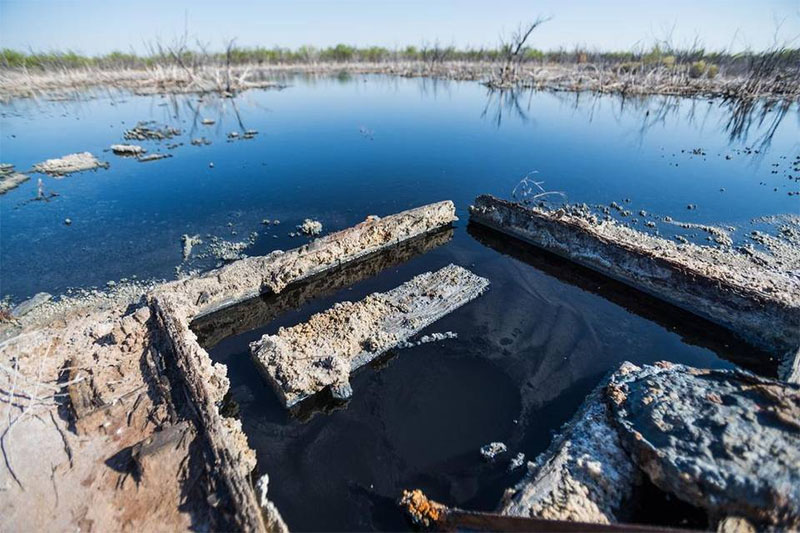
Source: The Texas Tribune | Jim Malewitz
Peculiar things can happen after folks drill deep into the earth — looking for oil, water or whatever — and leave a bunch of holes in the ground. Fluids can gurgle and leak, migrating where they don’t belong. In rare instances, land could even sink or collapse.
The oddest unintended consequences tend to bubble up in this pockmarked slice of West Texas, where wildcatters started poking holes in the ground nearly a century ago.
“If this stuff was even close to Austin, hell, it’d be national news,” said Ty Edwards, the fresh-faced assistant manager of the Middle Pecos Groundwater Conservation District, as he barreled down an empty stretch of highway during a June tour of the some of the standouts.
Texas, the nation’s petroleum king, is home to nearly 300,000 wells currently pumping oil, gas and dollars into the economy. But those are hardly the only holes that petroleum companies have bored into the Texas landscape. As far back as 1990, Texas touted more than 1.5 million oil- and gas-related holes, including hundreds of thousands of test wells, service wells and those that came up dry.
And even prolific wells don’t always pump forever.
When most wells end their service, no big deal. Operators plug them, limiting pollution threats, and move on. But when companies leave their wells open, a practice predating Spindletop and other prodigious early strikes, that’s another story.
Amid a recent oil-market crash that followed years of frenzied drilling, Texas is among several states, including Louisiana and Oklahoma, grappling with a surge of abandoned drilling sites and dwindling funds to clean them up.
Occasionally, the wells yield pollution you can see: oil, brackish water or other smelly substances leaking onto the land. But the biggest threats lie thousands of feet underground: the possible but tough-to-detect migration of oil and other toxic minerals into aquifers or water supplies.
Not every abandoned well threatens groundwater. But in some oilfields, they “can be ticking time bombs,” said Ronald Green, a hydrologist at the Southwest Research Institute, a private research organization in San Antonio. And as boom-and-bust cycles continue across Texas drilling fields, walling off water sources from potential contamination will only get harder.
Abandoned well now a ‘lake’
Off of Farm Road 1053 a few miles south of the Permian Basin town of Imperial (population 278 at last count) and next to a crumbling church sits what locals call Boehmer Lake. It’s not really a lake, and you wouldn’t want to wade in it. Its waters have tested more than three times saltier than averages in the Gulf of Mexico, with sulfur and salt crystals coating the surrounding vegetation. It attracts birds that don’t seem to belong here.
“Isn’t that wonderful?” Edwards asks sarcastically as a reporter takes a whiff of the stench.
The source of the putrid smell: a well that has gushed for more than a decade. And it’s only getting bigger.
“It’s like new wetlands,” said Gil Van Deventer, an Odessa-based hydrologist who has examined the area. “It’s not like West Texas at all.”
